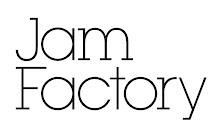Stephanie James-Manttan's current exhibition Indent is showing in CollectorSpace at JamFactory until 25 August. She answered a few questions for us about this exhibition and her work in general.
I’m a bit of a late starter. Before becoming an artist, I was a business
analyst working in England and Sydney. I’ve
always loved art since good ole school days and also I was one of those people
who like to draw and paint and do weekend drawing and sculpture courses.
After moving back to Sydney in
late 1999 with my husband and my beautiful 1 year old son, we settled into
life, but September 11 came a long, my husband lost his job because and the
business he was working for lost funding from one of their major venture
capitalist from the US. In short, we
moved to Adelaide in 2002 where my husband fully supported me in following my
passion for art, so I signed up for a visual arts degree at then Adelaide
Centre for the Arts TAFE SA. After
completing my degree, I then took up the 2 year associate program at the
JamFactory and have been there ever since.
Which
craftspeople, writers, artists, musicians, anyone do you find particularly
inspiring and how have they influenced your approach to making?
One of the major influences in my
current arts practice is indigenous basket weaving. I
went to Alice Springs in 2008 to do a 2 week indigenous workshop from the women
from Ernabella, I made the ceramics forms and the women decorated them. While I was there I got to watch the women
basket weave. I was transfixed with how
they grew from nothing and the repetition of the weave was comforting and
mesmerizing. When I got back to my
studio, I sat at my pottery wheel with a lump of clay on it and just as the
indigenous women of Ernabella would with a strip of fibre, I started to weave
but with clay. Well that’s the way I
see. I wheel throw the forms then I work
around it with wooden tools as you would weaving. I also love the soft organic nature of
weaving and that was very important to me that this is reflected in my
work. Even though my work is evolving,
it still incorporates this influence.
Are
there any specific quotes, ideas, places that influence this current body of
work?
I’m really liking the saying from
a wise Vietnamese Buddhist monke … these a two of my favourites.
“Smile, breathe and go slowly.”
Thich Nhat
Hanh
“Our own life has to be our message.”
Thich Nhat Hanh, The World We Have: A Buddhist Approach to Peace and Ecology
Thich Nhat Hanh, The World We Have: A Buddhist Approach to Peace and Ecology
Are
there any specific collections, museums that you have found inspiring and why?
The Museum of South Australia has
a wonderful and beautiful large collection of indigenous basket weaving.
Welcome
us to your studio - where is it?
My studio is tucked away in the
JamFactory’s main ceramics Studio. I’m
positioned between two wonderful ladies Helen Fuller and Maria Chatzinikolaki. We talk, laugh and cry about life in general
but we also support another’s work. I
miss them when they’re not about, but I do have all the other amazing associate
in the studio to keep me preoccupied.
The
work for the exhibition: Can you describe the specific themes reflected in this
body of work?
This body of work is all about
extremes, what I can do to the objects before they no longer become
functional. Aesthetics play a larger
part in my exhibition work than functionality.
I push, pull, squeeze and puncture the clay and push them to the utmost
extremes. Some rims quiver on the verge
of equilibrium. I love the fact that
even thought I use the same process of some forms, they all look different …
they have their own personality. I’m
also marking on the inside so you can see on the outside the smooth ripple
effects that you would only normally see on the inside … if that all makes
sense.
Describe
your method of production in this current work?
All my forms are thrown on a pottery wheel and whilst they
are still wet, I alter them. I have to
leave them until the clay is at a certain state before I touch them. If I don’t do this the marks are not as clean
and I don’t want the forms too dry then you don’t get that organic flow to
them. I use other materials to help
support them during this process … but I won’t tell you what I use because it’s
my little secret ;)












